Small overlap front: driver-side
Rating applies to 2014-15 models
Tested vehicle: 2014 Mitsubishi Mirage DE 4-door
The Mitsubishi Mirage was introduced in the 2014 model year, and the 2016 model year was skipped.
| Evaluation criteria | Rating |
|---|---|
| Structure and safety cage | |
| Driver injury measures | |
| Head/neck | |
| Chest | |
| Hip/thigh | |
| Lower leg/foot | |
| Driver restraints and dummy kinematics The dummy’s head barely contacted the frontal airbag before sliding off the left side as the steering column moved 14 cm to the right, leaving the head vulnerable to contact with forward side structure. Additionally, the seat belt allowed excessive forward excursion of the dummy’s head and torso. The side curtain airbag deployed but does not have sufficient forward coverage to protect the head from contact with forward side structure and outside objects, and the driver's seat tipped forward and toward the B-pillar. The side torso airbag deployed. | |

Action shot taken during the small overlap frontal crash test.

The dummy's position in relation to the door frame, steering wheel, and instrument panel after the crash test indicates that the driver's survival space was not maintained well.

During the crash, the dummy's head and torso barely contacted the airbag before sliding off to the left as the steering column moved to the right and the driver's seat pitched forward and tipped outward.

Door hinge pillar and instrument panel intrusion was extensive and contributed to a high risk of injury to the left lower leg and a moderate risk to the left knee.
Moderate overlap front: original test
Rating applies to 2014-24 models
Tested vehicle: 2014 Mitsubishi Mirage DE 4-door
The Mitsubishi Mirage hatchback was introduced in the 2014 model year, and the 2016 model year was skipped.
| Evaluation criteria | Rating |
|---|---|
| Overall evaluation | |
| Structure and safety cage | |
| Driver injury measures | |
| Head/neck | |
| Chest | |
| Leg/foot, left | |
| Leg/foot, right | |
| Driver restraints and dummy kinematics | |
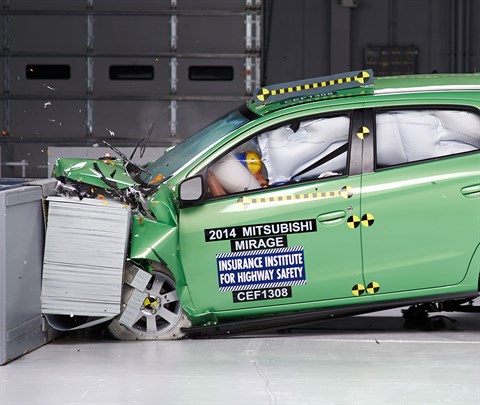
Action shot taken during the moderate overlap frontal crash test.
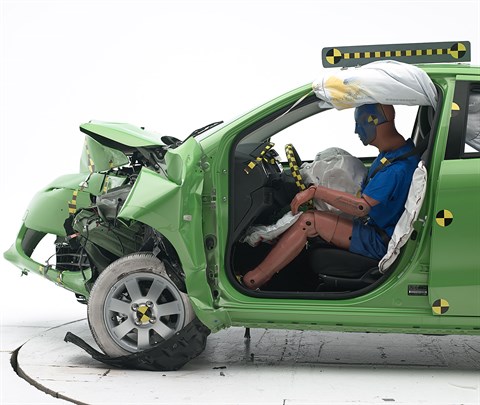
The dummy's position in relation to the steering wheel and instrument panel after the crash test indicates that the driver's survival space was maintained very well.
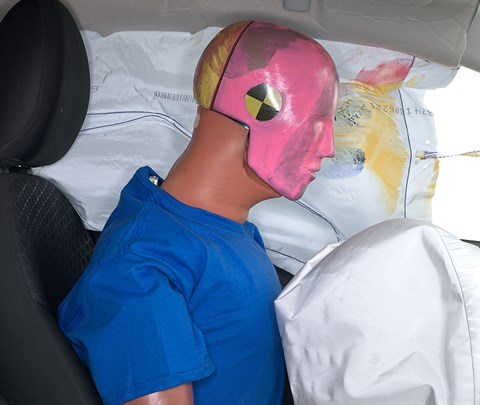
Smeared greasepaint shows where the driver dummy's head was protected from hitting hard structures by the side curtain airbag.
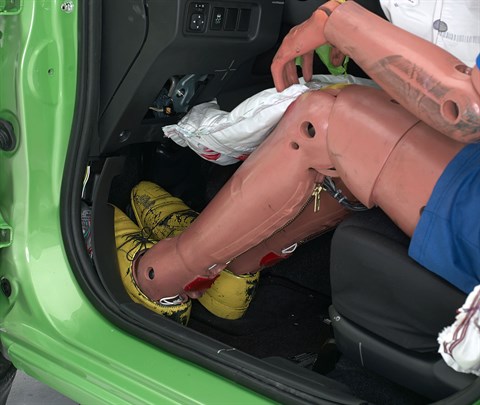
Intrusion into the driver's space was minimal, and all leg and foot injury measures were low.
Side: original test
Rating applies to 2014-24 models
Tested vehicle: 2014 Mitsubishi Mirage DE 4-door with standard front and rear head curtain airbags and standard front seat-mounted torso airbags
The Mitsubishi Mirage hatchback was introduced in the 2014 model year, and the 2016 model year was skipped.
| Evaluation criteria | Rating |
|---|---|
| Overall evaluation | |
| Structure and safety cage | |
| Driver injury measures | |
| Head/neck | |
| Torso | |
| Pelvis/leg | |
| Driver head protection | |
| Rear passenger injury measures | |
| Head/neck | |
| Torso | |
| Pelvis/leg | |
| Rear passenger head protection | |
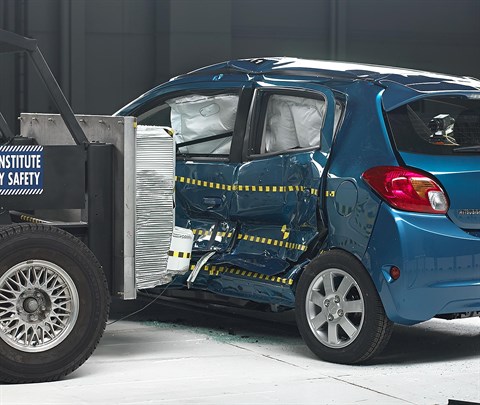
View of the vehicle and barrier just after the crash test.
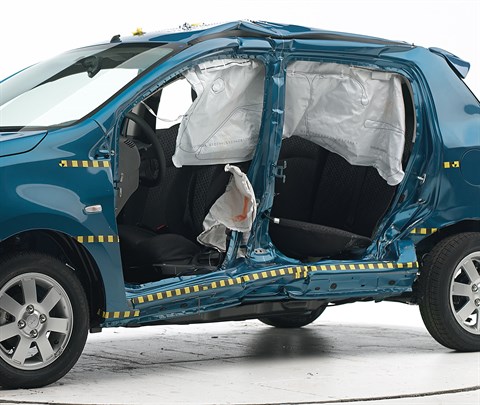
View of the vehicle after the crash with doors removed, showing the side airbags and damage to the occupant compartment.
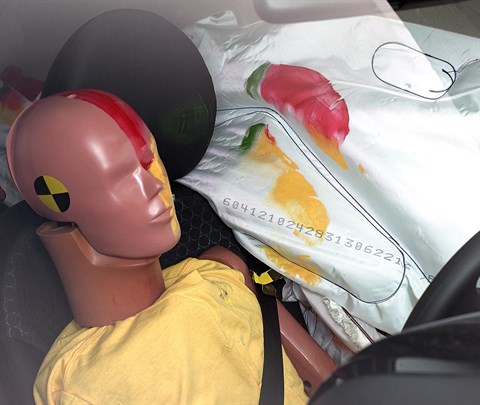
Smeared greasepaint shows where the driver dummy's head was protected from being hit by hard structures by the side curtain airbag.
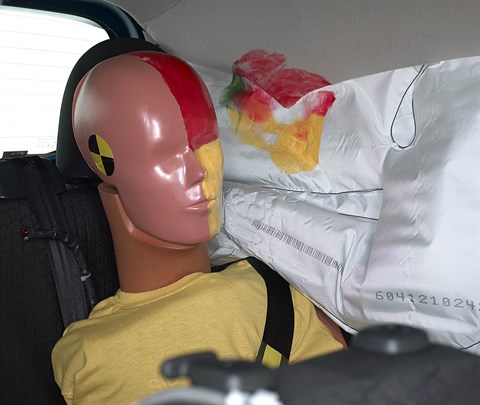
Smeared greasepaint shows where the rear passenger dummy’s head was protected by the side airbag.
Roof strength
Rating applies to 2014-23 models
Tested vehicle: 2014 Mitsubishi Mirage DE 4-door
Rating applies to both the Mirage hatchback (tested) and the structurally similar Mirage G4 sedan.
| Overall evaluation | |
|---|---|
| Curb weight | 2,061 lbs |
| Peak force | 10,031 lbs |
| Strength-to-weight ratio | 4.87 |
Head restraints & seats
Seat type: Manual cloth seat
| Overall evaluation | |
|---|---|
| Dynamic rating | |
| Seat/head restraint geometry |
About the head restraint & seat test
Currently, IIHS tests apply only to front seats.
